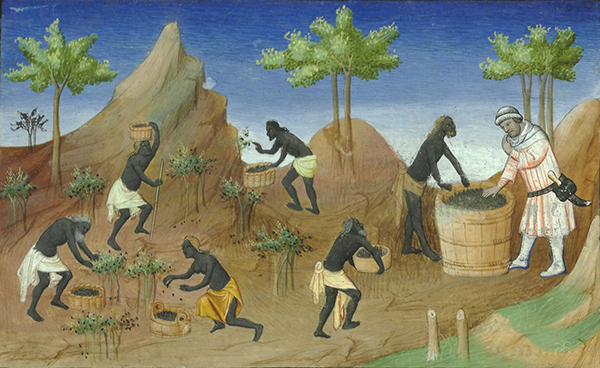A spoonful of cinnamon in an apple pie, a little bit of nutmeg on top of vegetables, some pepper in pasta and a spoonful of sugar in a cake. We have access to almost every spice across the globe, but we hardly use them. This was slightly different in the Middle Ages. Despite the limited availability and high costs, relatively more spices were used than nowadays. More than 75% of the recipes in 13th – 15th-century cookbooks include spices. English culinary manuscripts even go up to 90%. Why were spices so popular and how did we get them?
Use of spices
No, spices were not used to camouflage the taste of rotting meat. We know this because when someone from the Middle Ages had enough money to buy spices, they could also buy fresh meat. Spices do, in fact, have a mildly preserving effect but this was not the most important reason why spices were so popular.
In the Middle Ages they used spices in four ways: in perfumes and cosmetics, as a fragrance for religious rituals, as medicine or as a preventive ointment against illnesses and other ailments, and of course as an ingredient in the kitchen. Spices were very expensive and considered luxurious. They came from far away, which was so far that people had no idea where the spices came from, up until the 14th century. Many thought that spices came from the earthly paradise, that was said to be near India.
Only a small group of rich people could afford luxurious items like spices. Spices embodied style, good manners and prestige. They were a status symbol that distinguished them from other social classes. The fact that spices were used so plentiful hints at the fact that status was indeed the reason why they were used. Showing off was more important than the taste.
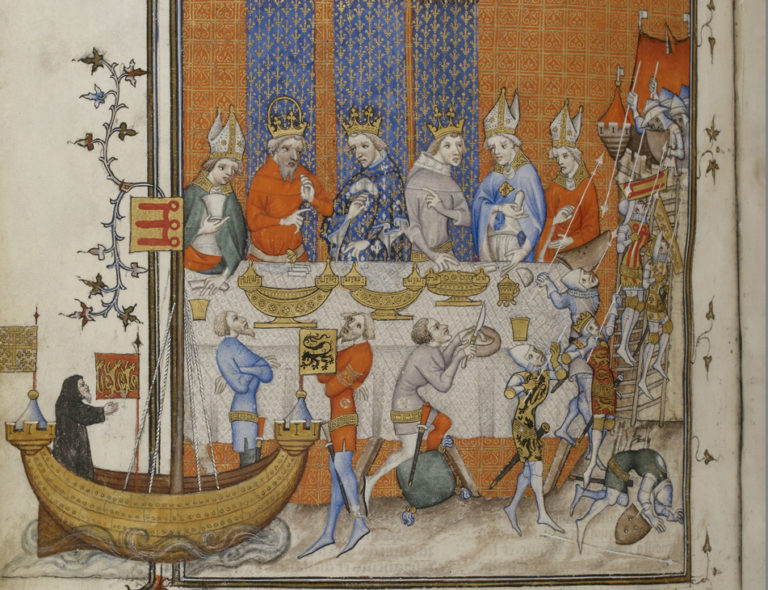
Culinary spices
Medieval cookbooks mention up to 40 different kinds of spices. The most commonly used ones are sugar (which was seen as a spice), black pepper, cinnamon, ginger and saffron. They also used nutmeg, mace and cloves. These were more expensive because they were rarer and were used more scarcely. They did provide the host with an image of prestige when they were used in dishes for guests. Other spices that were used in the Middle Ages are galangal, long pepper, tail pepper cardamom and grains of paradise.
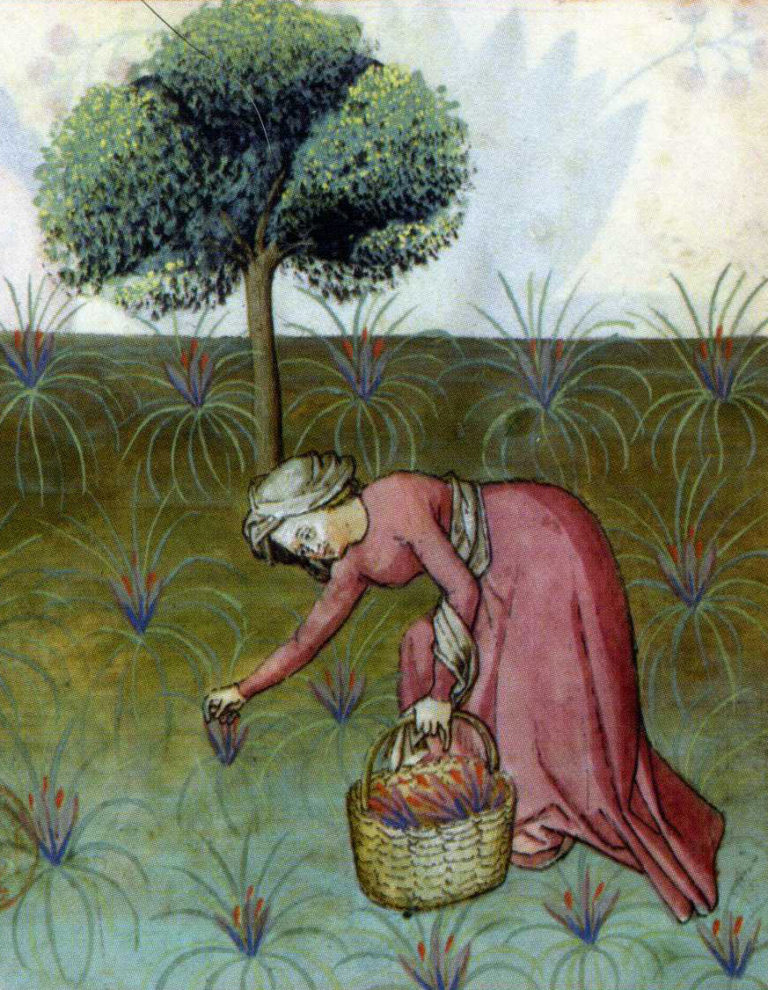
Spice trade
It is often said that spices were being used for the first time in the Middle Ages, but that is a myth. Spices were already used ancient times. The spice trade did decline in late Antiquity and early Middle Ages, but several sources show that spices were available all over Europe throughout these times as well. The Arabs were the ones who got the precious goods from Asia and delivered them to trading posts in the Levant (across the sea) and around the Black Sea (across the land).
The Byzantines controlled the trading posts around the Mediterranean Sea from the 9th until the 12th century. They got the spices from the above mentioned Arab traders and ruled the spice trade at the Mediterranean Sea. Around the 13th century, Italian cities took over this role, with Venice and Genoa as the biggest contenders. Despite the everlasting crusades and battles between the Christians and Muslims, the trade continued to flourish. The pope and other big European leaders had a toleration policy when it came to the trade with the Muslims. It seems like it was more important to have access to luxurious products and wealth than being religiously superior.
The spices eventually reached Europe at trading posts like Montpellier and Nuremberg, cities that were specialised in spice trade. Nuremberg is still known for its famous gingerbread. The precious spices were spread all across Europe via these cities and eventually got to spice traders and apothecaries in the rest of Europe. Spice and pepper selling guilds have been known in European cities since the 12th century. These people had just a vague idea of where their wares came from and had never seen their product in their fresh form.
The knowledge about spices changed in the early 16th century when Vasco da Gama discovered a trade route to India. The Portuguese made their violent way to the islands and places where the spices have their origin. They paved the way for the Dutch East India Company that was founded in 1602.
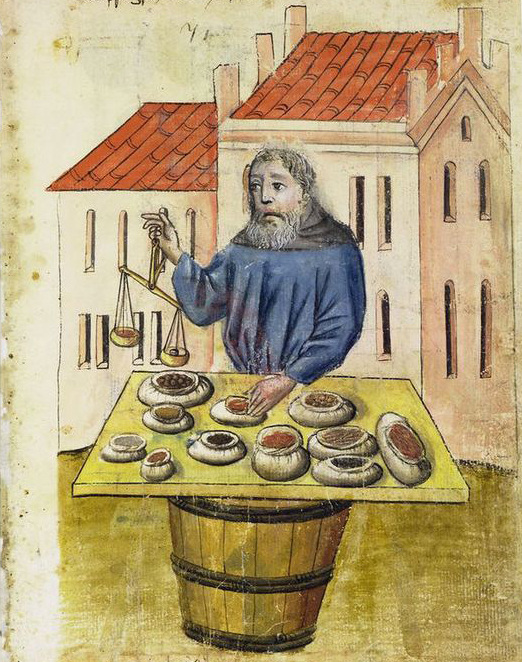
The flavour of spices
It is remarkable that, when you study medieval cookbooks and menus, you see the same spices occurring in dishes across the whole of Europe. Every court, city palace, big country house and castle used the same kinds of spices in their kitchen. You could say that there was a European, elite flavour palate. Of course, there are regional differences: England used more tail pepper, while France used long pepper the most. In Italy, they used a lot of saffron and not that much ginger, while the English and French both used ginger the most.
Spices were used in a multitude of dishes, but they were used the most in sauces for meat and fish. These sauces were often thickened by using breadcrumbs, had acids like vinegar and verjus and were also often combined with a sweet flavour like sugar and dried fruits. The Medieval kitchens of the rich can be characterised by a spicy flavour palate, combined with sweet-sour and sweet-savoury combinations. When we are going to use these combinations in our modern kitchen, we end up with some interesting, delicious recipes.
Recipe: Medieval beef pie
Medieval cookbooks are filled with recipes for different kinds of pie. I combined a recipe from the Ménagier de Paris (1393) with a recipe from Le Viandier (approx. 1300). The filling is delicious as a stew as well.
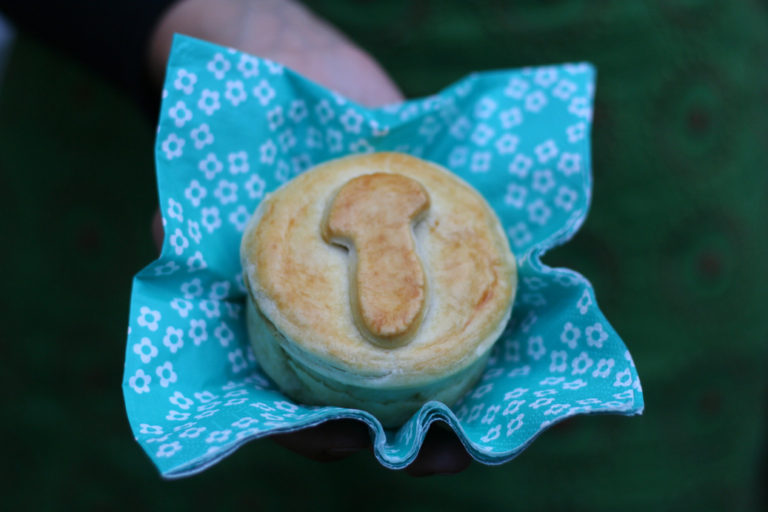
Ingredients dough
250 grams flour
125 grams of cold butter
1 tsp salt
2 tbsp cold water
1 egg yolk for an egg wash
Ingredients filling
300 grams of beef ribs
3 shallots
2 cloves of garlic
200 ml red wine
50 ml verjus
1 tsp powdered ginger
½ tsp cinnamon
1 ground clove
1 tsp long pepper
1 tsp grains of paradise
1 tsp sugar
1 tsp salt
10 dried prunes
3 tbsp white raisins
Butter for baking
Preparation
Put the flour, salt and butter in a bowl and cut the butter into small pieces. Add the water and quickly knead it into a dough. Let the dough rest in the fridge.
Cut the meat into small cubes. Chop the union into bigger pieces and cut the garlic into thin slices. Fry the meat in the butter until it is nice and brown. Remove the meat from the pan. Add some butter and fry the onions and garlic. Add the rest of the ingredients to the pan and bring to a boil. Put the heat low and let it simmer for 2 hours until the meat has turned tender. Stir regularly and add some extra wine when it becomes dry. Let cool completely.
Take approximately 2/3 of the dough and roll it out into a big sheet. Line a greased baking tin with the dough. Add the cooled filling to the baking tin. Roll out the rest of the dough and put it on top of the pie. Close the pie well. Make a small notch in the middle of the lid of the pie. You can put some decorative dough figures on top of the lid and give it an egg wash. Bake the pie for approximately 45 minutes in an oven at 200°C until it is golden brown.

